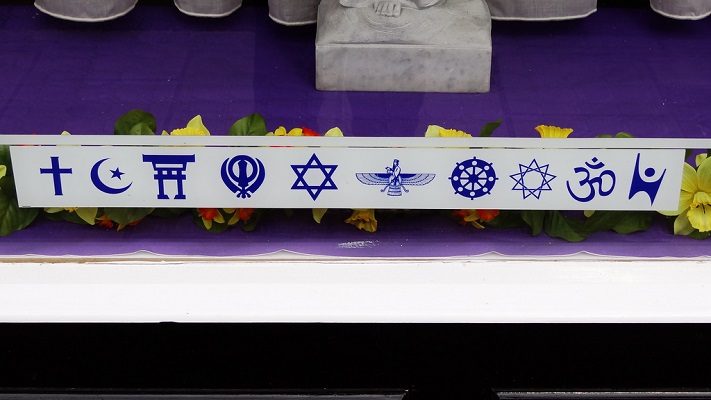
The Catholic Church runs 5,435 hospitals around the world, a figure not far from the number of registered hospitals throughout the United States of 5,686. In a 2011 survey in Afghanistan 74% ranked religious leaders as one of the three most trusted institutions and 25% went to religious leaders to solve land disputes.
These are some of the many statistics that show the extent of the resources and legitimacy of religious institutions in developing countries. For those interested in looking to local communities and indigenous groups to lead their country’s peacebuilding and development efforts, religious groups cannot be ignored.
What becomes critical for aid workers and civilian and military leaders alike is to understand whether these incredible material and social resources will be used in alignment or against stabilization and reconstruction objectives.
In policy and practitioner circles there is a mistaken presumption that real religious groups will unquestionably lend their resources to supporting Western peacebuilding and development efforts. Yet, examples from the Balkans during the nineties, Iraq and Afghanistan in the past decade or Ukraine today suggest otherwise. How can that be?
Are they not genuine religions or could it be that we are misunderstanding their motivations?
By misreading the motivations of religious institutions we often lose an opportunity for collaboration or ignore potential impediments to peacebuilding, state building or development.
So what motivates religious institutions?
In the rare instances when scholarship considers how religious institutions make decisions, such as allocating resources or lending their legitimacy, several different approaches are adopted. There are those that take a rational choice approach driven by the interests of individuals, others a resource dependency theory in which decisions of institutions are driven by their need to sustain themselves, or alternatively institutional approaches which reject aggregations of individual action instead focusing on institutional processes or internal cultures that shape the actions of individuals.
From a resource dependency theory approach decisions of religious institutions are shaped by imperatives to gain access to taxes, acquire higher membership numbers or access land. Rational choice theories would see the decisions of an imam, bishop or Ayatollah shaped by the particular individual’s interests. Institutional theories see the Roman Catholic Church or Islamic communities as self-contained entities with established norms, procedures or even cultures, a view that I see as being best aligned to understanding how religious institutions act.
In this case, how do we understand the norms and culture of a religious institution that would influence post-conflict statebuilding? To answer this question we need to engage with theology, the long forgotten and much maligned field of scholarship.
In Christianity salvation can be argued as the primary goal for individuals and the role of the Church is to ensure that everyone has the option of participating in ‘the economy of salvation’—in other words that they have a fair go at attaining salvation. For Christian religious institutions the focus becomes one of raising people out of absolute poverty, hence there are a plethora of Christian humanitarian aid organisations.
A key theme from the teachings of Islam, though, is justice. Not legal justice but a broader social justice shaped by the Quran, hadith and other interpretive tools adopted by various schools of thought. One religious obligation that can contribute to shaping society is ‘zakat’, the only one of five pillars in Islam that has a social element. Virtually all interpretations of this obligation dictate that zakat must be allocated only to other Muslims (p104). Such an in-group approach can exacerbate tensions, especially in societies bonded by religion or those strained through conflict negatively affecting efforts to rebuild cohesive states.
Similarly scholars of social capital write how Christian religions are particularly powerful contributors in part through their organised volunteering. Yet, in some countries such as Bosnia and Herzegovina the Catholic Church’s approach to volunteering has historically been focused on spiritual duties rather than tending to the poor which in turn weakened any potential of building bridging social capital.
Even how zakat is disbursed is influenced by doctrine that has been argued by some to weaken its potential developmental impact. Estimates put the amount raised through zakat in the hundreds of billions, yet scholars and experts suggest that most of this is “mismanaged, wasted or ineffective” being focused on short term aid guided by the teachings of the Quran (2:177).
Understanding the doctrines of religious institutions will help understand how aligned they will be with the international community during times of conflict, peacebuilding and development. This requires engaging with theology in a respectful but critical manner recognising that the goals of some religions may not necessarily align with those of secular societies.
Further Reading on E-International Relations
- Religion in International Relations and the Russia-Ukraine Conflict
- Secularism: A Religion of the 21st Century
- Understanding Peacebuilding: An Issue of Approach Rather than Definition
- Opinion – Navigating Epistemic Injustices Between Secularism and Religion
- United Moderate Religion vs. Secular and Religious Extremes?
- Probing the Intersection of Religion, Gender, and Political Violence